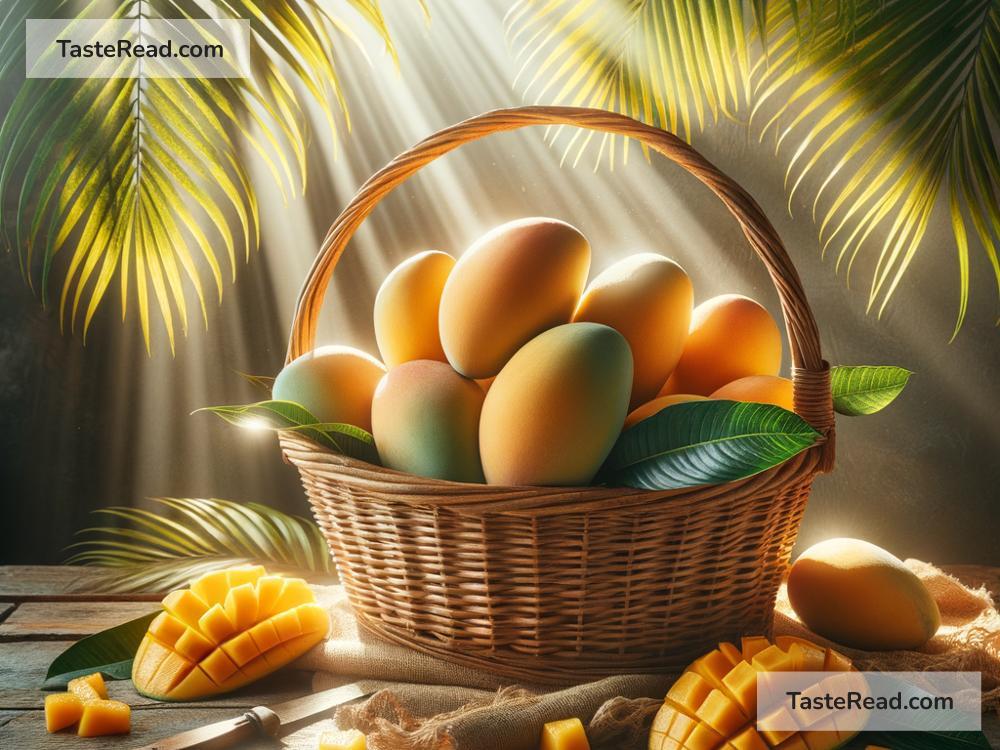How Mangoes Became a Tropical Favorite
If there’s one fruit that’s loved by millions across the world, it’s the mango. Known as the “king of fruits,” mangoes are sweet, juicy, and bursting with flavor. They are not just delicious but also packed with nutrients, making them a favorite in tropical regions and beyond. But have you ever wondered how mangoes became so popular? Let’s dive into the story of this vibrant fruit and explore why people in tropical areas — and everywhere else — hold it close to their hearts.
The Origins of Mangoes
Mangoes have been loved for thousands of years. Historians believe the fruit originated in South Asia, particularly in India or Myanmar. Ancient Indian records mention mangoes as far back as 2000 BCE. The mango tree wasn’t just admired for its fruit; it was also considered sacred. People believed mango trees symbolized prosperity, love, and happiness. Even today, the leaves of mango trees are used to decorate homes and temples during festivals in India.
From its early beginnings in South Asia, mangoes started traveling far and wide. Traders carried mango seeds to other tropical areas in Asia, and later, explorers helped spread them across the world. As people discovered the charm of this golden fruit, its popularity soared.
Why Do Mangoes Thrive in Tropical Regions?
Mango trees love warm, sunny places, which is why they grow so well in tropical climates. They need hot temperatures, plenty of sunlight, and well-drained soil to flourish. Tropical countries like India, Thailand, the Philippines, and parts of Africa grow mangoes in abundance. Once a mango tree is planted, it can live for hundreds of years, producing fruit season after season.
Because mangoes grow in tropical regions, they became a staple part of diets in those areas. Over time, people found creative ways to enjoy this fruit — fresh, dried, juiced, or even cooked. Mangoes are incredibly versatile, which increased their popularity.
Mangoes Around the World
As mangoes spread from South Asia, they reached the Middle East, Africa, and Southeast Asia. By the 15th century, Portuguese explorers introduced mangoes to South America. Soon, countries like Mexico and Brazil were growing mangoes too. Today, mangoes are grown in over 100 countries, making them one of the most widely enjoyed fruits in the world.
Different cultures have unique ways of savoring mangoes. In India, mangoes are made into refreshing drinks like “mango lassi” and are also used in pickles and chutneys. In Thailand, mangoes are served with sticky rice and coconut milk, creating a delightful dessert called “mango sticky rice.” In the Caribbean, ripe mangoes are often made into jams or sauces and paired with seafood dishes. No matter where you go, mangoes bring people joy in different forms.
Varieties of Mangoes
One of the reasons mangoes are so loved is the sheer variety available. There are over 500 types of mangoes worldwide! Each type has its own taste, color, shape, and texture. Some mangoes are small and sweet, while others are large and tangy.
For example, the “Alphonso” mango from India is famous for its rich flavor and juicy texture. The “Tommy Atkins” mango, commonly found in the United States, has a firmer flesh and mild taste. In the Philippines, the “Carabao” mango is loved for its super sweet flavor. With so many options, there’s a mango for everyone!
Nutritional Powerhouse
Aside from its delicious taste, mangoes are also incredibly healthy. They are rich in vitamins like vitamin C and A, which boost your immune system and keep your skin glowing. Mangoes are packed with antioxidants that protect your cells from damage. They also contain fiber, which helps with digestion. That means enjoying a mango isn’t just a treat for your taste buds — it’s good for your body too.
A Symbol of Celebration
Mangoes are not just a fruit; they’re a cultural icon in many tropical regions. In India, mangoes are often mentioned in poetry, songs, and stories. They are a symbol of love and friendship. During the summer season, mangoes become the centerpiece of family celebrations, festivals, and feasts.
Likewise, in parts of Southeast Asia, mangoes are exchanged as gifts to show hospitality. Whether ripe or raw, the fruit is cherished in both everyday meals and special occasions.
Global Mango Love
Over the years, mangoes have captured the hearts of people around the world. Supermarkets in non-tropical countries now stock mangoes all year round, shipped from tropical regions. From smoothies and ice creams to fruit salads and desserts, mangoes are enjoyed in countless recipes globally.
Social media has also played a role in spreading mango love. Food bloggers and chefs share creative ways to cook and serve mangoes, inspiring more people to try new mango-based dishes.
Conclusion
The journey of mangoes — from their humble beginnings in South Asia to becoming a tropical favorite enjoyed worldwide — is a testament to their irresistible charm. Their sweet, refreshing taste, combined with their cultural significance and health benefits, makes mangoes a fruit that everyone can appreciate.
Next time you bite into a juicy mango, remember its rich history and the way it has brought joy to people in tropical regions and beyond. It truly is the “king of fruits,” loved for centuries and destined to be enjoyed by many more generations.


